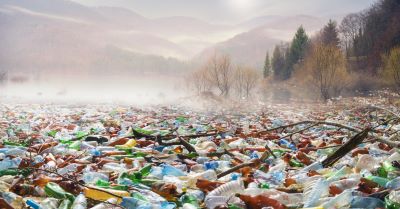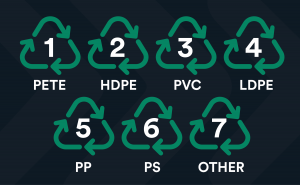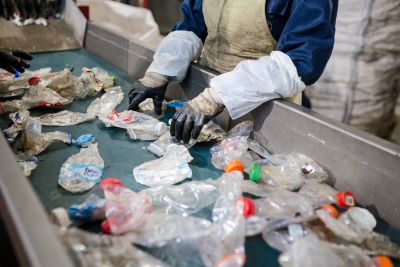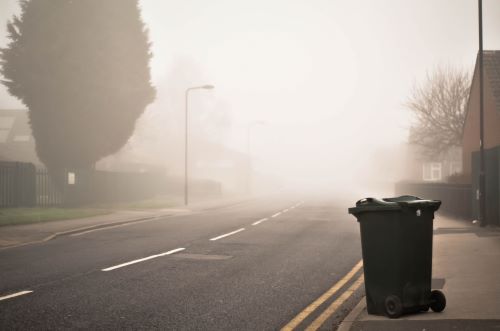It’s the season of everything that is spooky, sinister, and downright scary. Today’s trick-or-treaters may be in for a bit of a fright if they knew exactly what kind of environmental impact October 31st has on our environment. It seems the most shocking aspect of Halloween has nothing to do with ghosts or goblins but is tied directly to the huge amounts of waste created each year.
What’s more, with so much confusion surrounding waste streams, and misplaced confidence in the capacity of recycling schemes to simply make the problem go away, many people may be fooled into thinking this kind of consumerism is perfectly acceptable. The truth, however, couldn’t be different, and the stark realities behind the way we deal with waste can be extremely sobering.
As an addition to our Illustrated Guide, we take a look at all the things you might not know about different types of waste.
Some food is made to waste
There’s one image that springs to mind when thinking about Halloween. Jack-o’-lanterns. The scary fact is that around 1.3 billion pounds of pumpkin were wasted in 2014 out of a total of nearly 2 billion pounds. That’s more than half of the total output of the industry where pumpkins are literally grown to go in the trash after the holiday is finished. Ensuring the inside of the pumpkin is eaten and composting the remainder would make a big difference.
Most plastic ends up in landfill

According to EPA’s most recent estimates, less than 10% of plastic was recycled in 2015, which means a near 26,010 tons were sent to landfill—a shocking figure that really puts US recycling into perspective. This underscores the fact that recycling must be done properly as contaminated bins or loads end up in landfill.
This time of year is a particularly sinister time for plastics, as most candy wrappers and bags are difficult to recycle and simply end up in landfill. The same is true for costumes, masks, props, and toys that are usually made up of plastic composites. There are some specialized recycling options available to recycle packaging waste, and of course, donating costume material is a better choice than throwing it into the trash.
Most plastics can only be recycled a few times and some cannot be recycled at all
Not all plastics are created equal. There’s a broad range of materials used in the manufacture of plastics, some being more recyclable than others. For instance, while plastics numbered with a 1 or 2 are the most commonly recycled, those numbered from 3 to 7 are rarely recycled or simply impossible to recycle. In addition to this, plastics (unlike aluminum and glass) can only be recycled a limited number of times before the material becomes unusable.
What do these numbers mean?
1. PETE – Easy to Recycle
2. HDPE – Easy to Recycle
3. PVC – Difficult to Recycle
4. LDPE – Can be Recycled
5. PP – Can be Recycled
6. PS – Difficult to Recycle
7. Mixed Materials – Cannot be Recycled

Large proportions of the US waste stream go abroad for recycling
The US is among the largest generators of waste in the developed world, and yet recycling rates are among the lowest. Even when recycling is “accounted for”, very often materials are shipped abroad to countries with poor waste management records and little in the way of transparency when it comes to how waste is processed. Between 2015 and 2018, plastic exports declined from 2.05 million metric tons to 1.07 million metrics tons, however, this was less a reflection on improved recycling and more a reaction to China’s recent scrap import policies.
It is possible to compost meat and dairy
Despite what most people will tell you, it is possible to compost meat and dairy. These foodstuffs, along with things such as citrus fruit, that cannot be composted at home can be composted in industrial facilities or through other composting methods such as bokashi fermentation or vermicomposting. With little publicly available information about these methods, food waste simply ends up in landfill when it could easily be recycled.
Biodegradable/compostable packaging isn’t always what it seems
Biodegradable packaging is one of many attempts to encourage more sustainable consumption. However, an unregulated industry is allowing manufacturers to make promises they cannot keep. Compostable/biodegradable packaging is often classed as a composite material. This means that very expensive (and rare) machine or chemical processing plants are required to separate it. Additionally, tests have been conducted on certain biodegradable packaging that have shown it offers very little improvement over plastic. It’s best to use a reusable container whenever possible.
Contaminated waste streams are a huge problem

Confusion surrounding waste streams and which products can or cannot be recycled often leads to contaminated waste streams. This is a big issue within the waste management industry, meaning time-consuming hand sorting at the facility in order to separate materials or materials are simply categorized as non-recyclable and sent to landfill. Another issue is materials contaminated through their intended use. For instance, oils and food waste on packaging very often means that it can no longer be recycled—even if it is manufactured from simple paper or card.
When it comes to waste management and recycling, RTS is committed to helping raise awareness and delivering the right kind of information to businesses across the US. If your business is looking to reduce its environmental impact and raise recycling rates, contact our TRUE Waste Advisors who will be happy to help you explore your options through assessment, processing, and collection.

